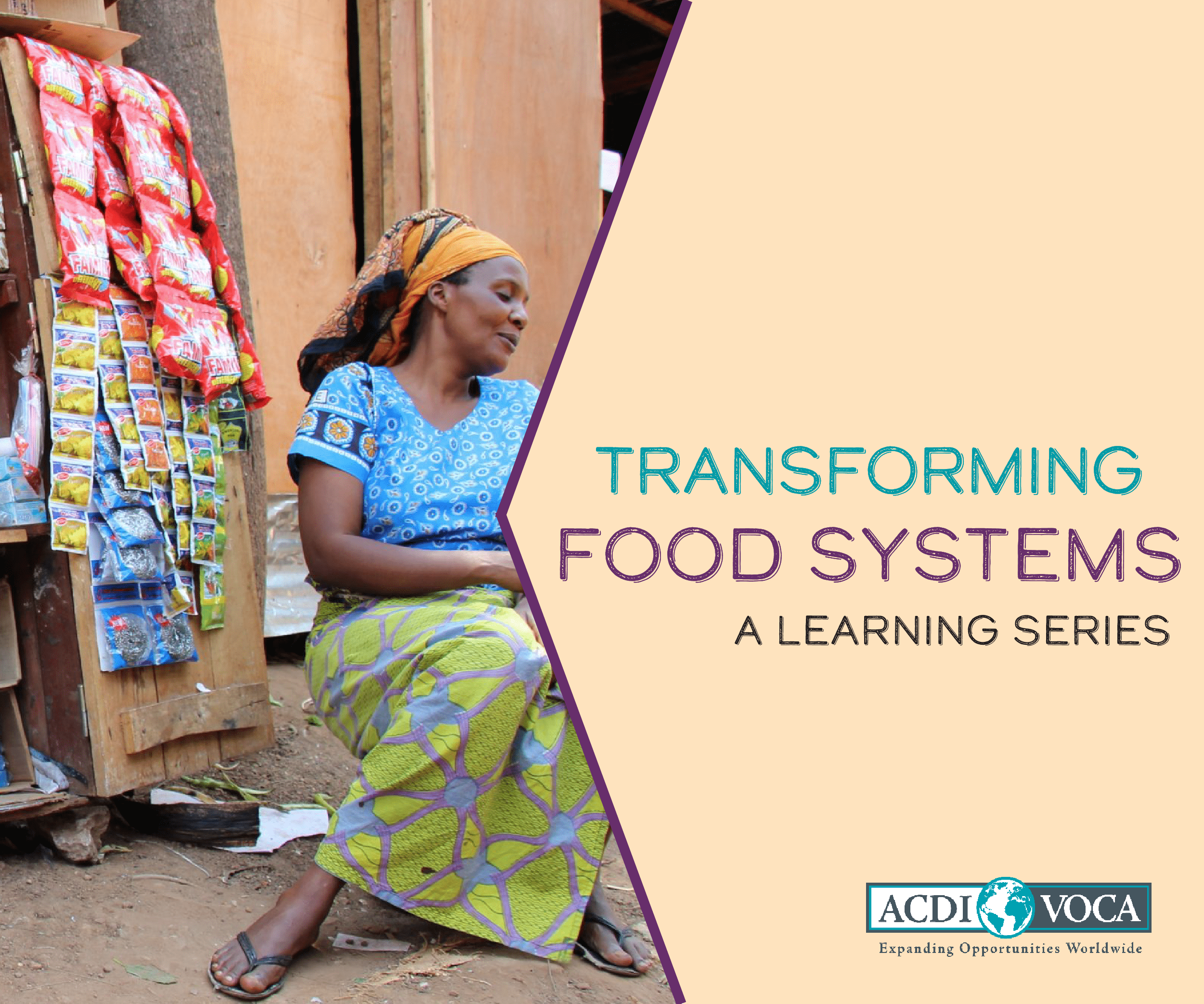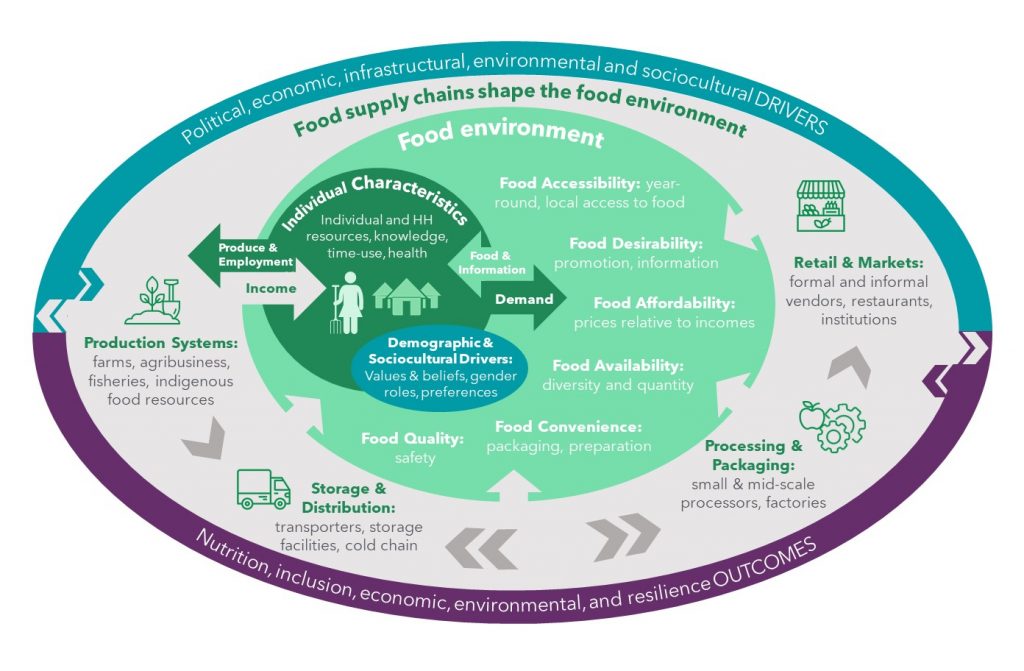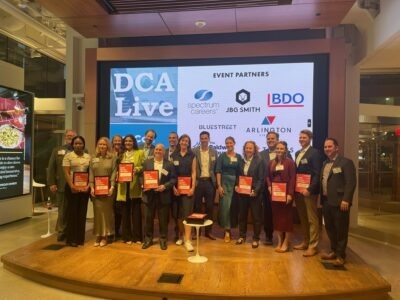
Action Track #1: Ensure Access to Safe and Nutritious Food for All
Background
In 2020, roughly 10 percent of the world experienced hunger, up from 8.4 percent in 2019, and 22 percent of children under five were chronically malnourished. These data illustrate a difficult path forward in achieving Zero Hunger — the second sustainable development goal (SDG) — which aims to eliminate food insecurity and malnutrition in all its forms by 2030.
Transformation of food systems to ensure access to safe and nutritious food for all has been recognized as a priority action area to address food insecurity and malnutrition. However, consuming sufficient quantity, quality, and diversity of foods remains a challenge in many countries, due to low availability, accessibility, affordability, and/or desirability of safe, nutritious in local food systems.
Our Approach to Ensuring Access to Safe and Nutritious Food for All
ACDI/VOCA aims to transform food systems to support the consumption of safe, diverse, nutritious foods for all. Specifically, we aim to positively impact the food environment — or the interface between the consumers and the food system — and impact what consumers can and want to procure for consumption. The priorities and function of actors that make up the food supply chain determine the extent to which consumers can access and afford diets that are safe, nutritious, convenient, and desirable, by positively or negatively impacting the food environment.
Thus, to improve nutrition, ACDI/VOCA takes a holistic food systems approach and identifies and addresses leverage points along the food supply chain that will positively impact the food environment and support households to consume a healthy diet. In practice, ACDI/VOCA works through producers to increase supply of nutritious foods in local food systems, processors to add or preserve nutritious value or make foods more desirable or convenient, and distributors and retailers to ensure that nutritious foods are affordable and available even in remote areas. We also engage communities and public and private sector actors to increase demand for and consumption of nutritious diets by changing behaviors, improving knowledge, and enhancing women’s agency.

Transforming Food Systems for Nutrition: The food supply chain (grey) influences (negatively or positively) the food environment (green), affecting what consumers procure for consumption. Within the food environment, consumer demand is influenced by individual, demographic, and sociocultural characteristics/drivers (center, green, and blue), which sends market signals back into the food supply chain about what consumers are demanding.
ACDI/VOCA Projects Improving the Access to Safe and Nutritious Food for All
Nutrition in Production Systems
The Feed the Future Bangladesh Livestock Production for Improved Nutrition Activity, funded by USAID and implemented by ACDI/VOCA, worked along the entirety of the food supply chain but most notably in the production sector of the food system to increase livestock productivity. Increases in milk productivity increased the availability and accessibility of milk at the household for home consumption. Due to an average increase in milk production of 200 percent for over 180,000 households, the Activity saw a 40-point increase in households that regularly consume dairy products between 2015 and 2020.
The Activity also implemented social and behavior change activities to drive consumer desirability for more diverse, nutritious foods. Project results in 2020 estimate that 83 percent of women consumed an adequately diverse diet, up from 39 percent in 2015.
Nutrition in Food Processing and Distribution
Under the Feed the Future Tanzania NAFAKA II Activity, funded by USAID, ACDI/VOCA improves the availability, accessibility, affordability, convenience, and desirability of fortified maize flour by working in the processing and distribution sector of the food system. The NAFAKA II Activity has worked with over 38 small and medium-scale millers to scale-up the adoption of fortification technology and market their product in peri-urban and rural, last-mile markets, increasing the quantity of fortified maize flour available for over 500,000 last-mile consumers and 92,000 students at 230 schools.
The NAFAKA II Activity trained private sector actors, like millers and rural food vendors, and local community actors, like community health workers, on nutrition message dissemination to consumers to stimulate local desirability. After message dissemination, the NAFAKA II Activity found that 100 percent of consumers were willing to pay the marginal extra cost to have their maize fortified, thus supporting processors to continue marketing their product in last-mile areas.
Nutrition in Food Retail and Markets
The Feed the Future Kenya Resilience and Economic Growth in the Arid Lands – Accelerated Growth (REGAL-AG) project, funded by USAID and implemented by ACDI/VOCA, enhanced the growth and competitiveness of the livestock sector in northern pastoralist Kenya. REGAL-AG partnered with local market management committees (MMCs) to increase the efficiency of live animal sales in rural markets by supporting local policy development, investment in infrastructure, and overall management of the market. In 2018, 20 markets were enhanced and 20 MMCs were executing market management action plans.
As a result, marketplaces saw a growth in additional food vendors, like traders selling fruits and vegetables, thereby increasing the availability and accessibility of nutritious foods for an estimated 250,000 people. Approximately 75 to 96 percent of program participants surrounding these areas achieved a diet in minimum household dietary diversity in 2018.
Access the first post in this Food Systems Series, published August 25, 2021, here.






